5 bits of kit every poultry farmer should own
If there’s one thing that sorts the best poultry producers from the average, it’s understanding the environment of individual sheds.
This is best done by measuring every parameter possible – temperature, ventilation, air flow and so on, and acting on those measurements to influence the environment to best suit the birds.
It’s important to keep measuring throughout the year, too, as different weather can influence bird environments.
Adjusting settings accordingly is a sure-fire way to get better bird performance.
In this guide, we pick out five essential – and relatively inexpensive – bits of kit every poultry farmer should have in their toolbox.
See also: Broiler production technology trends to watch out for
1. Kestrel wind meter
The speed of air as it flows through sheds is key to helping farmers understand how well the ventilation system is feeding birds with fresh, clean oxygen and removing expelled carbon dioxide – essential for any high-performing unit.
Kestrel’s 5000AG livestock environmental meter (from £207.73) can measure wind speed and air temperature, allowing farmers to get a clear picture of how quickly air moves while birds are in a poultry shed.
The meter can also indicate heat stress, monitor wind chill and determine some more specialist measurements, such as barometric pressure and altitude.
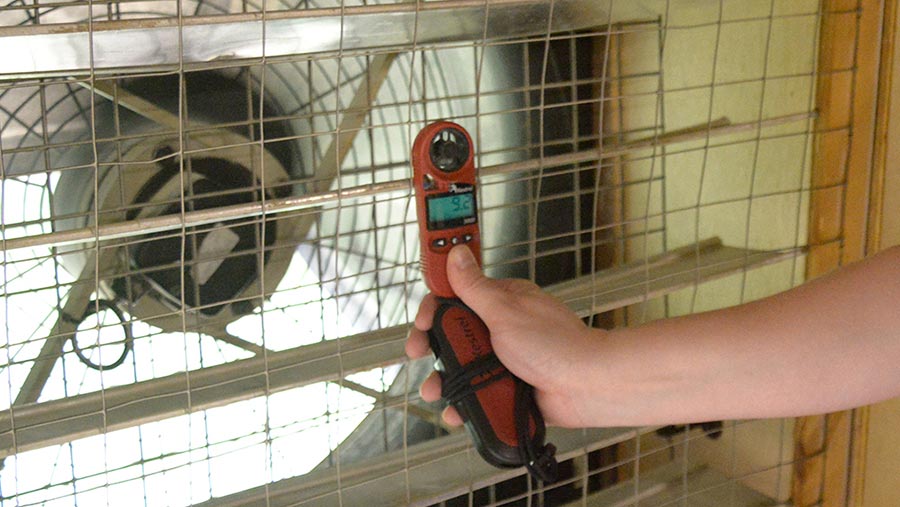
2. Fogging machine
On the more specialist side of things, a fogging machine makes it simple to visualise how air is moving through a shed.
It’s worth testing an empty shed thoroughly and then confirming results when birds are in situ, as they can dramatically influence air flows.
Regular testing will help find spots where air is leaking, or point out objects that are adversely influencing the effective flow of air through a shed.
A battery powered system can cost upwards of £500. But if you’re happy to use an extension cable, fog machines designed for discos can work just as well, and can be picked up for less than £100 on eBay.
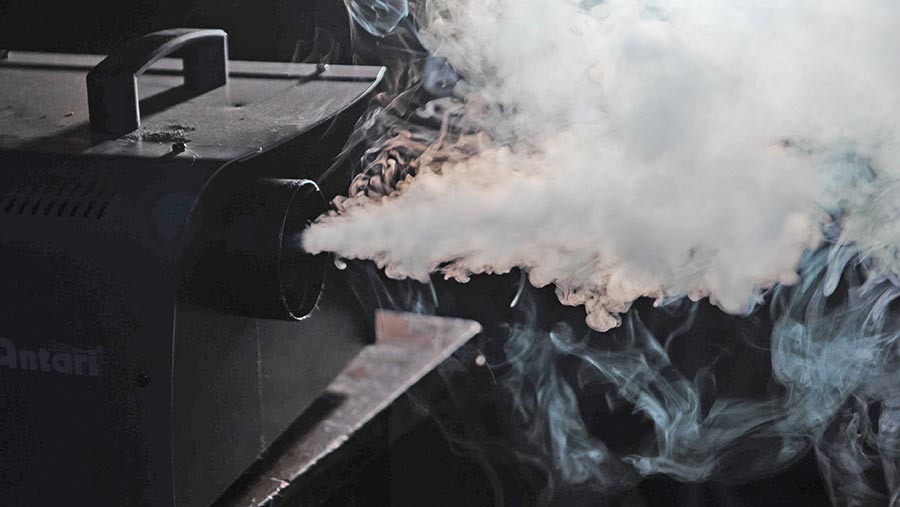
3. Thermal camera
![]() Finding heat spots and cooler areas in a shed will ultimately aid flock uniformity.
Finding heat spots and cooler areas in a shed will ultimately aid flock uniformity.
It’s crucial not to underestimate the importance of aiming for an even flock of birds – the farmer with 50% of birds performing above breed standard will not be selling the liveweight of his neighbour with 90% of birds at standard.
The cost of thermal imaging has dropped dramatically in recent years.
Once the preserve of specialists with thousands of pounds to spend, it is now possible to buy a smartphone attachment, like the Flir One, which retails for £215.99 online for Apple or Android phones.
Flir says its device works by showing the differences in heat energy, allowing farmers to visualise tiny changes in heat and find where temperatures dip.
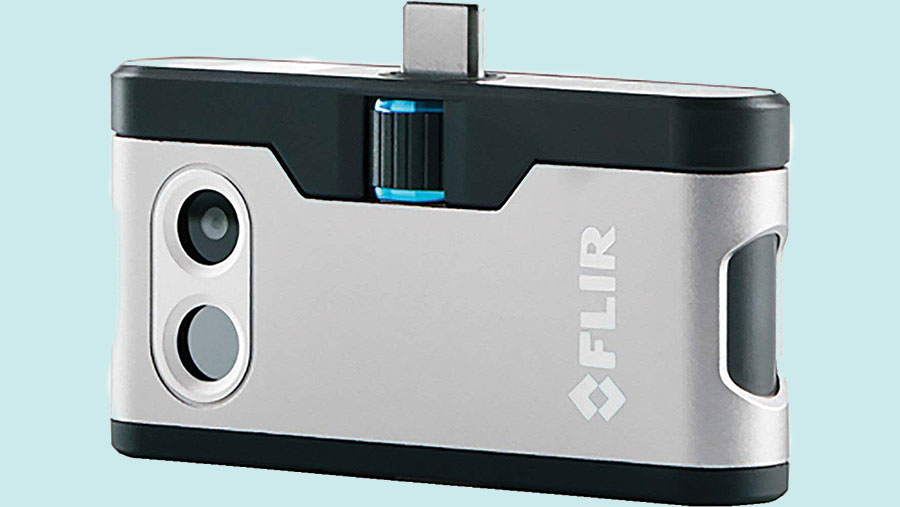
The Flir thermal camera clips to the bottom of a smartphone
4. Water flow meter
Water is often considered a forgotten nutrient – ensuring it is clean, free of pathogens and as cool as possible is a good start, but if the pressure at nipples is incorrect, birds may not be able to access it, which will affect growth.
Too-high pressure will make the balls at the end of nipple drinkers difficult to press, making access hard.
If pressure is too low it can lead to leakages, which will ultimately be detrimental to litter quality.
A measuring cylinder, ideally with a nipple activator, will help determine water flow.
Use a stopwatch to time how much water has passed through the system from the nipple farthest from the pressure regulation system in 30 seconds.
Double that amount and you have a flowrate per nipple to compare with the breed standards.
5. Cloacal thermometer
When chicks are placed, decisions about temperature adjustments should be driven by cloacal temperatures, which give the best estimate of how birds are responding to shed temperatures.
Genetics outfit Cobb Europe recommends checking 15 birds in a range of different parts of a shed. At day-old, the ideal temperature range is 40-40.6C.
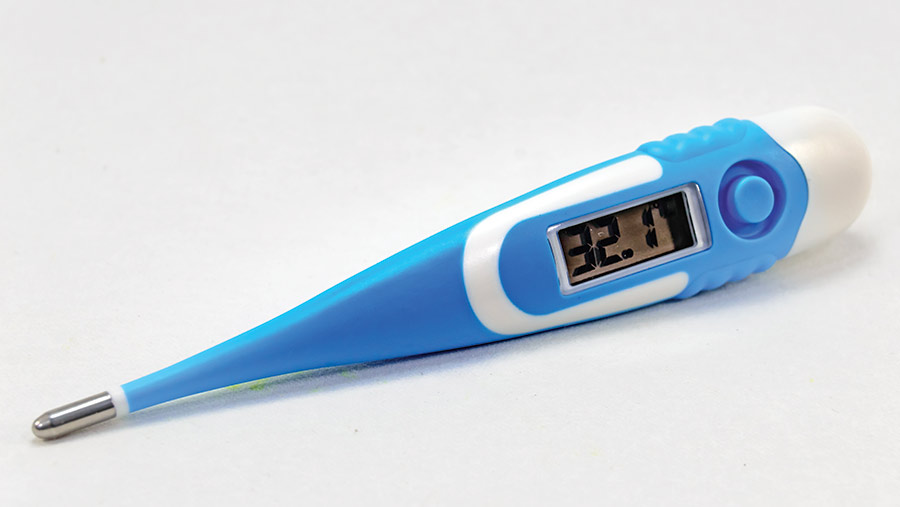
Accurate digital thermometers can be picked up for as little as £9.99 from pharmacies and will do the job as well as anything more costly, making it a piece of kit with a real bang for your buck.
Two apps worth downloading
Chkminvent
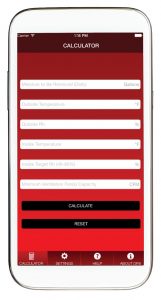 This app, which is free to download on Apple’s App Store, aims to offer a basic calculation of the minimum ventilation required to keep litter in a broiler shed dry.
This app, which is free to download on Apple’s App Store, aims to offer a basic calculation of the minimum ventilation required to keep litter in a broiler shed dry.
It was produced by the University of Georgia’s department of poultry science and offers a simple way to determine if fans are operating at sufficient speeds to draw enough moisture from sheds.
It is a simple tool, but one worth reviewing, or using as a basic training tool for new recruits, as it demonstrates well the interaction between ventilation and shed humidity.
Ross
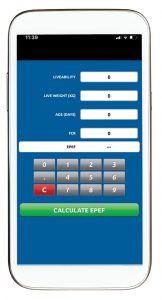 Aviagen’s Ross app is a handy tool for any poultry producer – regardless of the breed they are growing.
Aviagen’s Ross app is a handy tool for any poultry producer – regardless of the breed they are growing.
Breed standards for the most common Aviagen birds are presented in an easy-to-read format, and it also contains a calculator for European Production Efficiency Factor (EPEF).
Available for both Android and Apple, it has another tool that allows farmers to easily convert from imperial to metric a range of important measures such as stocking densities, light and ventilation.
